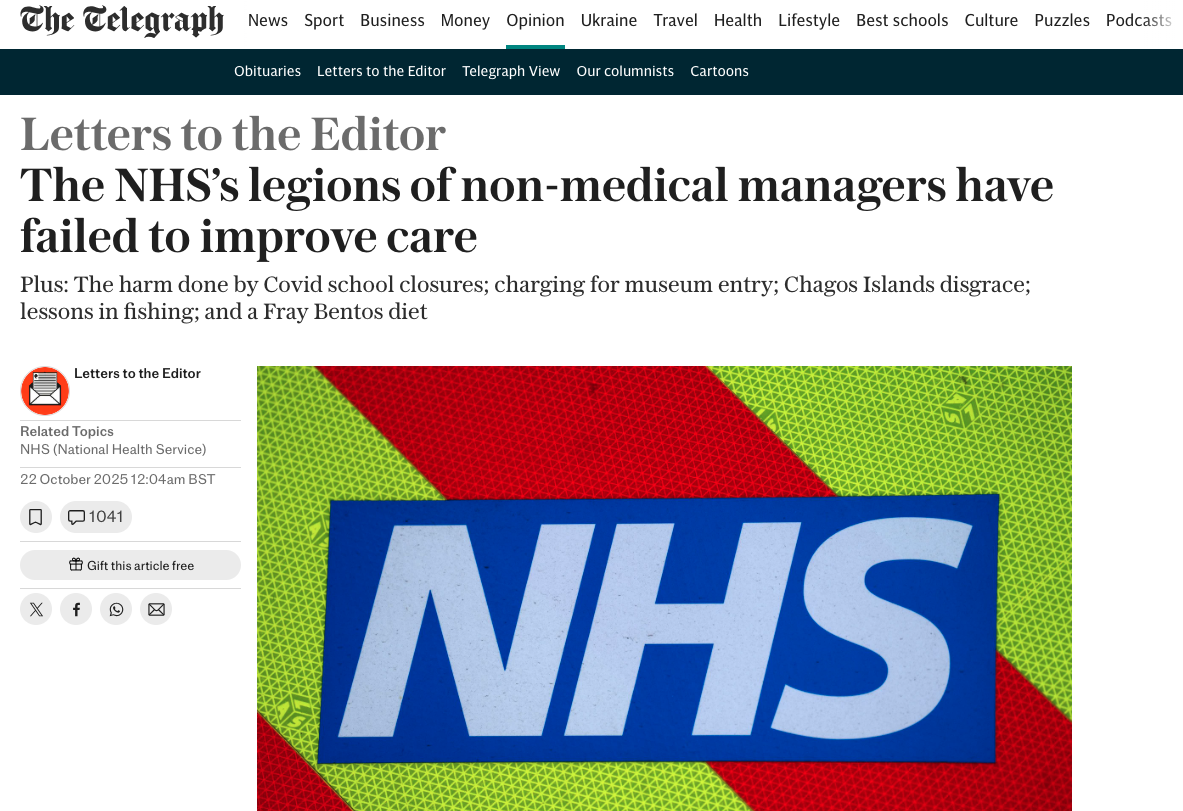When I wrote to The Telegraph recently, I spoke from nearly three decades of experience as a doctor who has seen the same painful pattern play out again and again — brilliant, compassionate clinicians trapped by systems that make their work harder, not easier.
We often talk about workforce shortages, burnout, or waiting lists — but rarely do we confront one of the most corrosive issues in modern healthcare: legacy technology.
It doesn’t just slow us down. It actively sabotages care.
1. Outdated systems are making admin a second job for frontline staff
Every day, nurses, GPs, social workers and hospital administrators spend hours typing, duplicating, printing, scanning, and re-entering the same data across multiple systems that don’t talk to each other.
We’ve normalised the absurdity of having to input a patient’s date of birth six times into six different platforms — just to get a referral sent.
This administrative overload doesn’t just waste staff time; it delays care, obscures risk, and erodes patient trust.
A recent report showed that AI tools could save NHS staff an average of 43 minutes a day on admin. That’s encouraging — but let’s be honest: this is not transformation. You cannot sprinkle AI on top of broken foundations and call it progress.
Until we confront the core issue — a labyrinth of outdated systems and siloed data — those 43 minutes will be swallowed back up by inefficiency somewhere else.
2. Legacy contracts are locking care providers into stagnation
The technology challenge isn’t just technical — it’s contractual.
For years, hospitals and social care providers have been tied into long, restrictive contracts with legacy vendors who charge premium prices for obsolete solutions.
These contracts discourage innovation, punish flexibility, and make interoperability practically impossible.
Even when frontline leaders want to modernise, they find themselves bound by commercial handcuffs that prevent change.
We have built a healthcare economy where the cost of staying still is passed on in human terms — missed diagnoses, clinician fatigue, and fractured patient journeys.
3. Disconnected systems multiply the burden and magnify risk
Every disconnected record is a potential blind spot.
Every repeated data entry is a chance for error.
Every siloed database makes collaboration harder.
Clinicians are forced to operate in fragments, piecing together patient stories like detectives instead of healers. This disconnection breeds inefficiency and risk — not because staff aren’t doing their jobs, but because their tools are failing them.
In an era when our phones can integrate calendars, banking, and travel with a tap, it is inexcusable that our hospitals and care homes still depend on systems that can’t share a basic medical history across departments.
The path forward: intelligent, connected infrastructure
The future of healthcare must be proactive, not reactive — built on platforms that connect data seamlessly, reduce duplication, and support clinicians in real time.
We need hospital CEOs and social care leaders to stop investing in patches and start building new digital foundations. Productivity is important — but safety is critical, and patient trust is sacred.
Transformation will not come from another dashboard or another login screen. It will come from dismantling the outdated relics that keep our best people buried in admin and rebuilding healthcare on intelligent, interoperable systems designed for care — not bureaucracy.
We stand at the edge of a health tech renaissance.
It’s time to be bold enough to let go of the old world — and build one that truly serves the people who care for us.
Read the full article here



.png)
.png)







